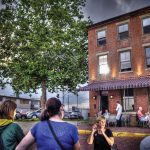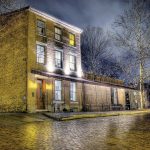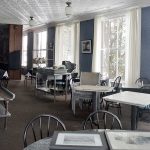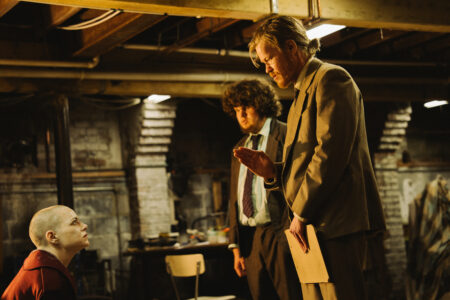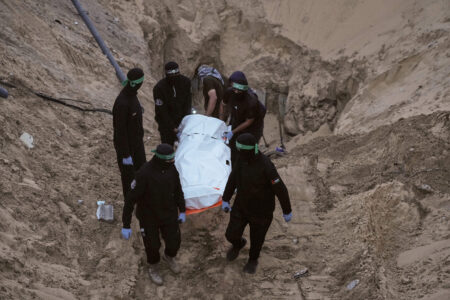The long history and many lives of Marietta’s Levee House
- Photo provided by Robb DeCamp A Hidden Marietta guide speaks to a tour group in front of the Levee House at 127 Ohio St. while in the background a server takes orders at the restaurant.
- Photo by Michael Kelly The Levee House stands in snow on Friday. The one-floor addition on the east side was added around 1911 to the original building, which dates back to 1826.
- Photo provided by Harley Noland The Levee House was at one time a liquor store, as shown in this undated historical photo.
- Photo provided by Robb DeCamp Light sparkles on the brick pavement of Ohio Street after a rain in this undated photo of the Levee House.
- Photo by Michael Kelly The dining room of what was formerly the Levee House Restaurant remains furnished and ready for another tenant.
- Photo by Michael Kelly The Ohio River flows on Friday, as seen from the west side of the Levee House. The restaurant, operated until December 2017, offered dining on an opened covered deck with an unobstructed view of the river.
- Photo by Michael Kelly A door on the west side of the main building at Levee House shows typical federalist architectural detail.
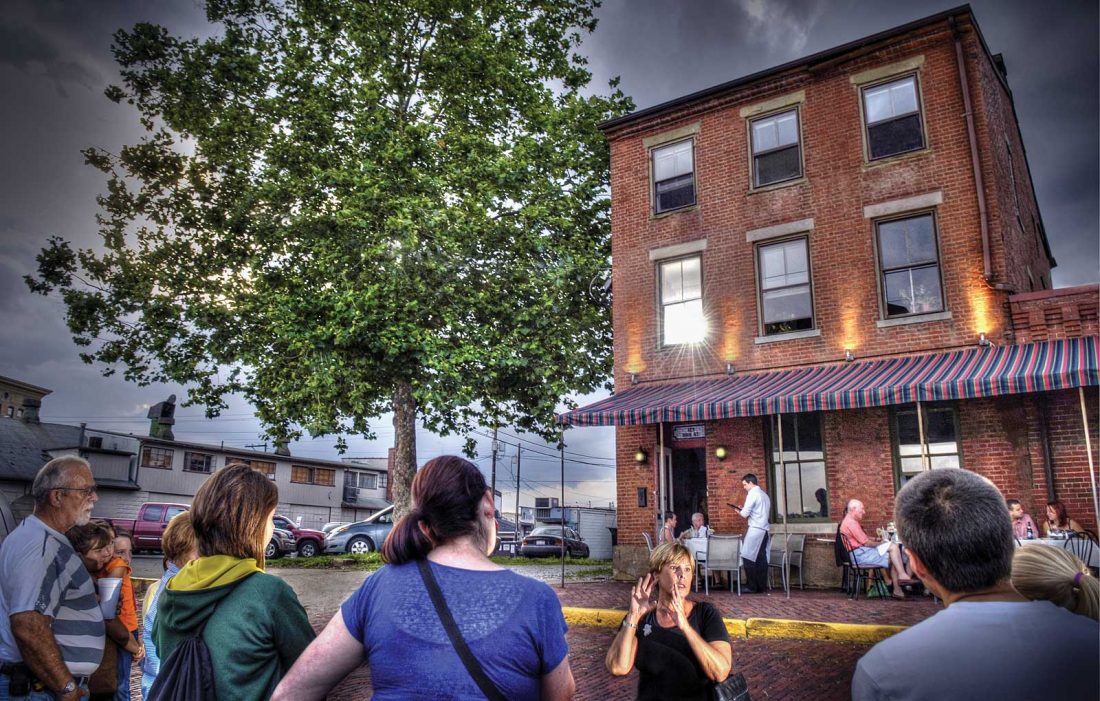
Photo provided by Robb DeCamp A Hidden Marietta guide speaks to a tour group in front of the Levee House at 127 Ohio St. while in the background a server takes orders at the restaurant.
MARIETTA — On Friday morning snow languidly fell on the Levee House as the cold gray waters of the Ohio River moved sluggishly by less than 100 feet down the bank.
It was the 193rd winter for the three-story brick building, the only remaining structure of a line of Federalist-design buildings that once lined the Marietta riverfront.
The sturdy brick exterior and massive poplar floor joists are all that remain of the original building, one of many designed and built by Col. Joseph Barker, whose architectural touch shaped much of the early settlement in Marietta and up and down the river.
The building, not as notable as Barker’s other projects, which include the Blennerhassett estate, the Hildreth House and the mansion that formerly stood by the Lafayette Hotel, started its existence as a dry goods store — the first such establishment in the Northwest Territorities, as the area was known at the time — run by Dudley Woodbridge, Jr. It has since served as a hotel, a saloon, a liquor store, an auto repair shop and the final assembly location for Studebaker automobiles.
When Harley Noland moved back to Marietta in 1976, he was keen for a project.
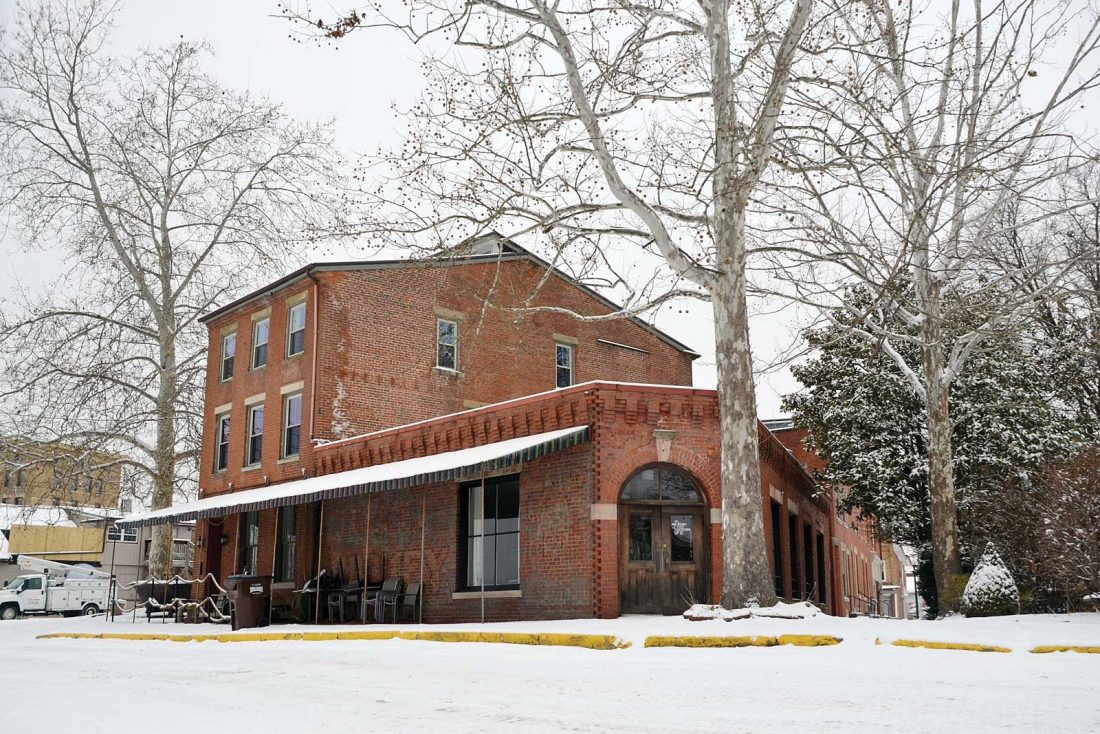
Photo by Michael Kelly The Levee House stands in snow on Friday. The one-floor addition on the east side was added around 1911 to the original building, which dates back to 1826.
“I wanted a building to renovate as sort of a calling card for my architectural business,” he said. “It was on the waterfront and the building was pretty rough then. It was condemned, the roof had fallen in, the floors were collapsing. You could stand in the basement and look up through all three floors and see the sky.”
Noland bought it from three men who owned it at the time — Jack Gammon, Roy Snediker and Jim Mitchell.
“They said they’d won it in a card game,” Noland said. The transaction was completed in 1977.
Noland gutted the interior, preserving only the brick shell and poplar floor joists from the original structure. The second and third floors were converted to loft apartments and the main floor, including a single-story addition built in 1911, became the Levee House Cafe. It opened in 1980.
Noland’s efforts preserved the site of many transformations representative of the city’s history. Woodbridge Jr. moved his dry goods store out of the building at some point near the mid-1800s, having re-invented a business model that had proved catastrophic in the first decade of the century. An embargo against European imports in 1807 killed his import enterprise, and he also became embroiled in the Aaron Burr affair through a partnership with Harman Blennerhassett. Woodbridge Jr. turned to establishing Marietta and other Mid-Ohio Valley locations as regional distribution centers for manufactured goods from Pittsburgh, a business that was ultimately affected by new transportation routes such as railways that reduced commercial traffic on the river.
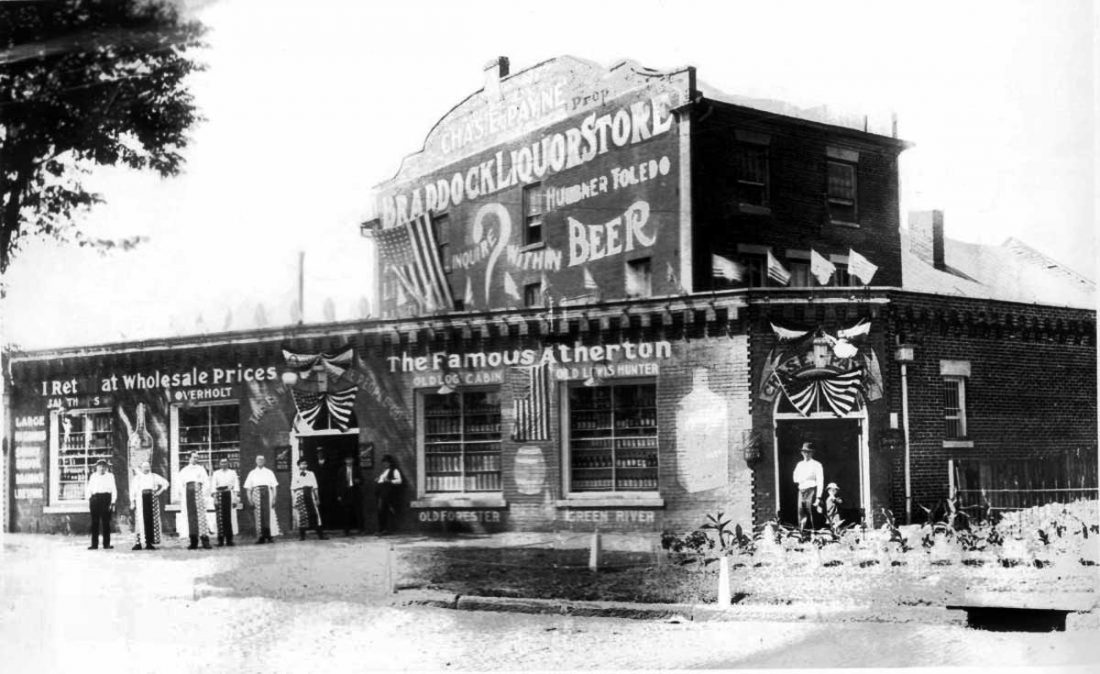
Photo provided by Harley Noland The Levee House was at one time a liquor store, as shown in this undated historical photo.
The Levee House went through several changes of ownership, serving primarily as a hotel during the mid to late 1800s and developing a lurid reputation, hosting saloons and becoming a brisk business location for riverfront prostitutes. It was known as La Belle Hotel and later as the Golden Eagle, also a location for the Braddock Liquor Store. A city directory from 1890 shows it as a saloon owned by Peter Klein.
Prohibition brought an end to all that, and the building became for a time the assembly point for Studebaker automobiles, Noland said. Afterward, it became an auto repair shop, the last of which was Darrah’s, which Noland said offered various kinds of engine repairs. It had been vacant for years before Noland bought it.
“The top floor had been a warehouse space, with a lift from the main floor,” he said. In addition to convenience for restocking inventory on the main floor, the lift also allowed goods to be moved quickly to a dry area in the event of flooding, he said.
Like most riverfront buildings in Marietta, the Levee House has seen its share of fire and flood. Noland said it was extensively renovated around the 1890s after a fire in a neighboring building damaged it.
And in common with many of the elderly structures in town, it also has its share of legend. The building is one of the stops on Hidden Marietta’s ghost tours, with its best known legend involving the decapitation of a prominent citizen. Accounts of the story say it occurred in the 1890s.

Photo provided by Robb DeCamp Light sparkles on the brick pavement of Ohio Street after a rain in this undated photo of the Levee House.
The man who was killed was described only as an oil tycoon who frequented the La Belle to make use of the readily available prostitutes. His 14-year-old son, apparently angered and humiliated by his father’s behavior and its effect on the reputation of his family, went into the hotel with an ax one night, went up the stairs to the room where his father was in the company of a woman, and used the ax to sever his father’s head. At his trial on first-degree murder charges, the son was acquitted despite his own admission that he committed the crime, legend goes. Juries apparently had significantly more latitude in those times than they do now.
In commonly available accounts, none of the parties are named, although Noland said a woman named Nora Descott managed the establishment at the time.
The neighborhood in the 1800s looked much different than it does now.
“At Second and Ohio streets, there was a big brick building, used to be a hotel, and it’s been knocked down,” Noland said. “In the other direction, toward the Lafayette Hotel, there was one continual row of beautiful federalist buildings.”
Next door, he said, during an excavation diggers found layers of white mussel shells with holes punched through them, evidence of a button factory that used to be on the site.
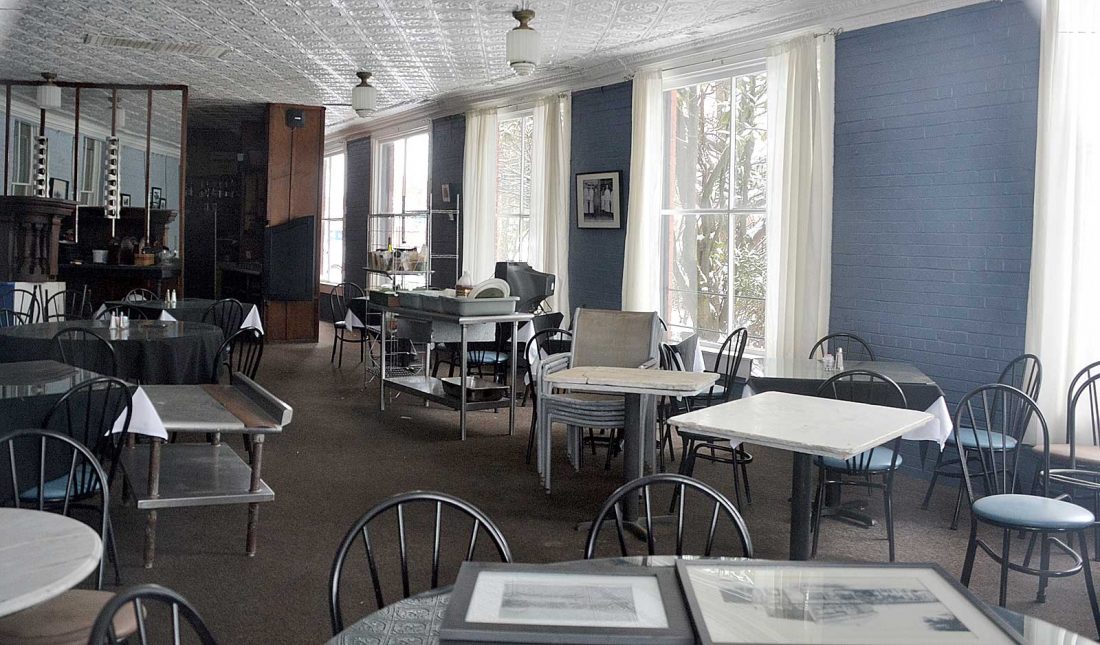
Photo by Michael Kelly The dining room of what was formerly the Levee House Restaurant remains furnished and ready for another tenant.
The building has shed the darker parts of its history. After Noland operated the cafe on the main floor for about 30 years, David and Kimberly Hearing opened the Levee House Restaurant, offering elegant fine dining. The restaurant was known not only for the quality of its menu but also for the atmosphere, with a restored period dining room and a covered deck facing the river.
The Hearings operated the restaurant from 2010 to the end of 2017, when David told The Marietta Times he was exhausted from the seasonal quality of the business.
Marietta photographer Robb DeCamp lived in the third floor apartment of the building on and off for about 10 years starting in 1999.
“I basically raised my son there, he spent about six years of his life living in that apartment,” DeCamp said. “It was an honor to live there, to be a part of history. It was a good time, a great place to experience sternwheel festivals and sunsets on the river…I saw barges frozen on the river.”
DeCamp’s photos of Marietta’s waterfront are on display in the big hallway on the ground floor of the Armory building on Front Street, where the Marietta-Washington County Convention and Visitors Bureau offices are located.
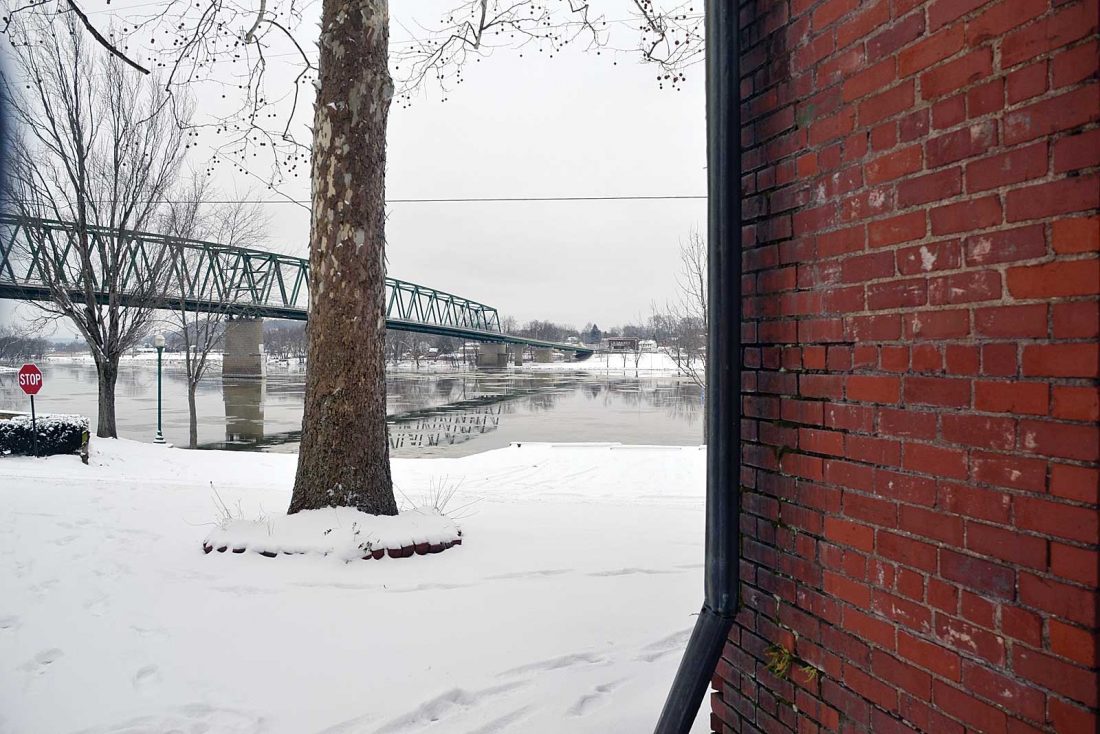
Photo by Michael Kelly The Ohio River flows on Friday, as seen from the west side of the Levee House. The restaurant, operated until December 2017, offered dining on an opened covered deck with an unobstructed view of the river.
“I was in a position for the most beautiful pictures of downtown and the waterfront,” he said. “Living there made me love the history of the town, made me want to show it off.”
The two-and-a-half bedroom apartment itself is an architectural marvel.
“It’s a loft apartment, with sort of a loft inside it, a loft inside a loft, all open inside,” DeCamp said. “You can sit on the couch in the middle of the living room and look out the window, and all you see is the river.”
He said the aura of the neighborhood is enough to take him back in time.
“I love running around here when nobody is around. You get that feeling of old Marietta, a part of the old city,” he said. “In my heart, this will always be home. It’s really one of the highlights of Marietta.”
As for rumors that the old building is haunted, DeCamp declined to confirm or deny that.
“I’ll keep the haunting stories for myself. Let’s just say it was a very interesting place to live in,” he said.
Noland, who still owns the building, said he hopes to have another restaurant operator soon. The first floor has been vacant since 2017.
***
A Glance at the Levee House
* Address: 127 Ohio St.
* Built: 1826
* Builder: Col. Joseph Barker
* Architecture: Federalist
* First occupant: Dudley Woodbridge, Jr., dry goods store
* Subsequent uses: Hotel, saloon, liquor store, auto repair shop, auto assembly shop, restaurant, apartments
* Current owner: Harley Noland
Source: Harley Noland
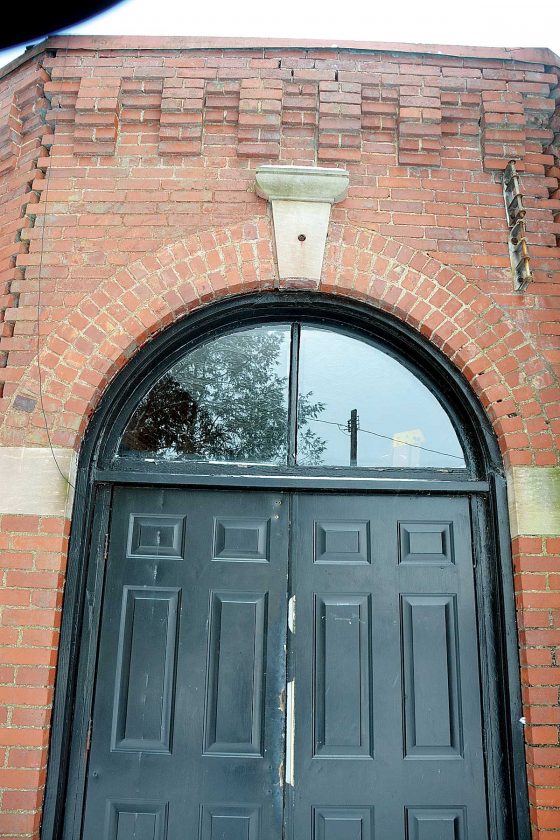
Photo by Michael Kelly A door on the west side of the main building at Levee House shows typical federalist architectural detail.

